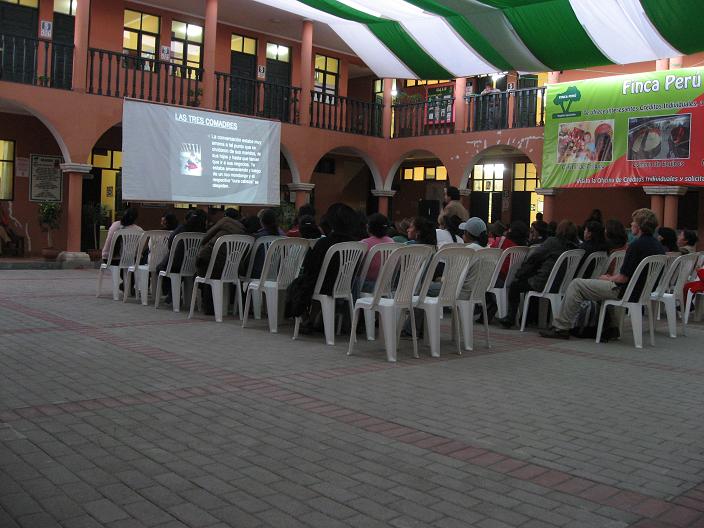Just want to be starting something
September 10, 2009
By Suzy Marinkovich, KF8
I remember when I was a teenager, I’d awaken in the middle of the night and meander to the kitchen for a glass of water and my dad would be perched there in his chair with a yellow notepad, writing madly about some scientific revelation. He was always so quiet, and his presence would catch me by surprise. The way his hair was completely messed up and his eyes scarily determined, I could swear in these moments he was a mad scientist. He was coming up with a new theory, some new protein to test for in his lab. I always felt that surely, by the aura of madness accompanying him, he was writing down information that would lead to finding a cure for something that I was incapable of understanding due to his annoying inability to use layman’s terms in explanations.
Writing this post was the first time I felt a little of my Dad’s madness, because I wrote this post quickly with just a pen and notebook in hand and a bad case of writer’s cramp. As I wrote it, one of the loan officers asked to borrow my pen four times before I noticed she was speaking to me. I am sure I looked insane to her. I just feel very occupied by this issue, as I am sure a lot of the other Fellows, Kiva staff, lenders, and borrowers themselves feel.
When your heart is invested in someone, it feels instinctive to look for dangers in their path to warn them. I do the same thing for microfinance; I am always pining around our borrower’s stories to unearth obstacles to its success. I’ve come to believe microfinance’s first and most formidable threat is living without ever having had instruction in economics.
By removing certain variables we can make sense of at least a part of this problem.
When small loans don’t work, let’s assume that means one of two things:
A) It didn’t help the borrower financially and they are about the same.
B) It financially hurt the borrower.
Let’s go ahead and remove all extraneous factors – e.g. political strife, health, personal problems, weather, etc. I am aware that presently, it’s virtually impossible to bar these factors in the developing world as we know it. However, for all intents and purposes, let’s work with variables we might be able to control.
As I write this blog post in my notebook, I am seated in the back of a sea of white plastic chairs that hold the many socias (borrowers) at FINCA. We are all watching a Power Point presentation on the subject: “How to know if you are winning or losing in small business.”
FINCA organized this talk because of the following statistic:
The average life span of small businesses in Ayacucho is 18 months.

FINCA Peru lecture on fostering successful business
This is a huge, viable beast microfinance has to fight – as well as something many of you entrepreneurs many be familiar with yourselves. With an average life span of 18 months, and no formalized economic training except trial and error, our borrowers could face a continuous, depressing cycle of failed business after failed business.
In the US and most other ‘Western’ countries, getting a loan for a brand-new business involves more than saying that your family has worked for generations in, for example, the art of farming strawberries. You typically also need a business plan to raise the capital needed. You need to demonstrate to the lenders that your strawberry farming business has a solid chance of ‘winning’.
This variable demonstrates well the reason I always hated the quote, “if at first you don’t succeed, try, try again.” I much prefer, “if at first you don’t succeed, you’re doing it wrong.”
Our borrowers are often so happy to finally be offered a low-interest loan that they lack the courage needed to tell their MFIs about their educational needs.
That is why it is our responsibility to lend to MFIs who are teaching their borrowers economics, or to use a more trendy word: sustainable business.
I write this post contented as I hear our borrowers asking the speaker questions about their respective businesses. The fact that these typically shy Quechua women grab a microphone in front of their peers and unload their business’s challenges tells me something – our borrowers not only deserve, they want the education. And we must agree to hold our MFIs to that higher standard. They absolutely must provide it.
We’re attracted to microfinance, and thus Kiva, because of its sustainability. But in order to be sustainable, there are at least two prerequisites: adequate education and health services accessible to borrowers. While health services are a stretch to ask from our MFIs, we can ask them to teach business. They know business. They know their own community’s version of small business better than we ever will. They owe us lenders the assurance that they are teaching their borrowers how to sustain their businesses.
I encourage you to take a moment to check out the biographies and websites of our microfinance partners before your next loan. Support the MFIs going the extra mile.
This is Suzy Marinkovich’s last post from FINCA Peru. She is currently in route to Cochabamba, Bolivia, to work with a new Kiva partner, CIDRE, during her second of three placements. She has a wholehearted passion for microfinance, social justice, and poverty alleviation. Suzy is most excited to listen to the incredible stories of Kiva borrowers in South America and let them know how much they continually inspire us all.
/>PREVIOUS ARTICLE
Necessity Entrepreneurship →NEXT ARTICLE
What factors affect loan funding times? →













